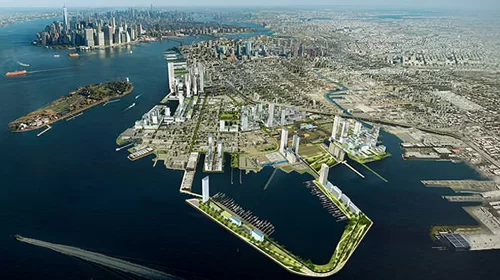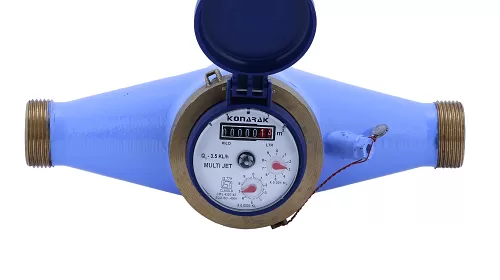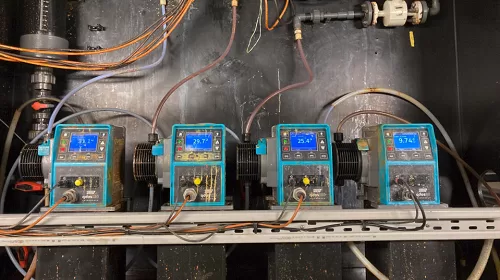India’s rapid urbanization has led to a pressing need for smarter, more sustainable infrastructure solutions. As the country continues to embrace the idea of smart cities, technology, data-driven decision-making, and sustainability are transforming urban planning. One of the critical components of this transformation is smart water management, which ensures that cities can meet the growing demands of a booming population while also preserving precious natural resources.
UNDERSTANDING SMART CITIES
A smart city is one that integrates digital technologies to improve the quality of life for its residents. Unlike traditional cities, smart cities are designed to be intelligent and adaptive, utilizing data for real-time monitoring, efficient resource management, and better engagement with citizens. Key features of smart cities include intelligent infrastructure, sustainability, and citizen-centric services.
India’s Smart Cities Mission (SCM), launched in 2015, aims to develop over 100 cities with integrated command centers and sector-specific innovations, driving transformation across urban India. These cities are implementing AI-driven traffic management, IoT-enabled utilities, and smart governance platforms that focus on digital inclusion and participatory planning.
THE ROLE OF WATER MANAGEMENT IN SMART CITIES
As India’s urban population is set to exceed 600 million by 2030, water scarcity and demand management are becoming central concerns for smart city development. Efficient water management is a key pillar of smart city planning, addressing the need for adaptive strategies that can mitigate the effects of climate change while ensuring reliable water distribution.
One of the most pressing challenges in Indian cities is non-revenue water (NRW), which accounts for up to 40-50% of water losses in some regions. Implementing smart water solutions that reduce NRW losses is crucial for both improving water supply and increasing operational efficiency. Smart cities must also develop adaptive water management strategies that help mitigate urban flooding and prepare for droughts.
Integrated Water Resources Management (IWRM) is a holistic approach to water management, that is essential for balancing surface and groundwater resources effectively. Smart cities can implement Integrated Water Resources Management (IWRM) strategies that promote basin-wide planning and coordinated decision-making. This ensures that urban water demand and supply are managed efficiently while preserving ecological balance. Through data analytics, real-time monitoring, and participatory governance, IWRM enables cities to optimize water distribution while mitigating the risks of depletion and contamination.
TECHNOLOGICAL INNOVATIONS IN WATER MANAGEMENT
Technological advancements are revolutionizing urban water systems, enabling cities to manage water resources more effectively. GIS (Geographic Information Systems) and remote sensing technologies are used to map aquifers, monitor watersheds, and forecast urban floods. AI and machine learning play a key role in predictive analytics, helping to forecast water demand and detect leaks before they become major issues.
Additionally, IoT-enabled smart meters allow for real-time monitoring of water consumption, helping reduce wastage and optimize water distribution. Desalination and water recycling technologies are also vital in creating a circular water economy, ensuring sustainable urban growth while meeting the increasing demands of water supply.
For example, cities like Pune have adopted smart water networks that integrate IoT sensors to optimize water supply and reduce NRW losses. This demonstrates how technology can directly improve urban water management, driving efficiency and sustainability.
SUSTAINABILITY AND CLIMATE RESILIENCE
Sustainability is at the heart of smart city development, and blue-green infrastructure (BGI) is emerging as a critical solution for enhancing urban resilience and water sustainability. Permeable surfaces, rainwater harvesting, and constructed wetlands help reduce urban runoff, enhance groundwater recharge, and provide natural filtration for storm water management.
Indian cities like Bangalore and Chennai are adopting BGI solutions to combat water stress. In Bangalore, the restoration of urban lakes and in Chennai, storm water harvesting initiatives are part of a broader effort to ensure long-term water sustainability in the face of climate change.
- Water-Energy Nexus: Smart cities require an integrated approach to managing water and energy systems. Smart water grids interact with renewable energy sources, such as solar-powered desalination and hydropower integration, to enhance efficiency and sustainability. Indian cities can adopt energy-efficient water pumping and wastewater treatment solutions that minimize carbon footprints while ensuring consistent water supply. Leveraging AI and IoT, smart cities can optimize energy usage across water distribution networks, reducing costs and promoting sustainability.
- Industrial & Agricultural Water Use in Urban Areas: Industries and agriculture account for a significant portion of urban water consumption. Smart cities must implement industrial water recycling and Zero Liquid Discharge (ZLD) policies to promote sustainable water use. Additionally, urban wastewater can be treated and reused for peri-urban agriculture, reducing dependency on freshwater sources and enhancing water efficiency in food production systems.
POLICY AND GOVERNANCE: A FOUNDATION FOR SMART WATER MANAGEMENT
Effective governance is essential for the success of smart water management initiatives. India’s National Water Policy (2020) advocates for demand-side management and smart metering to address water scarcity. Initiatives like the Atal Mission for Rejuvenation and Urban Transformation (AMRUT) focus on providing 24×7 water supply and reducing NRW, making them key pillars of India’s water governance strategy.
State-specific smart water policies in places like Maharashtra and Karnataka are helping to drive digital water governance and bring about tangible improvements in urban water systems.
- Groundwater Management Policies in the Digital Era: India faces severe groundwater depletion, particularly in water-stressed cities like Bangalore and Delhi. AI and IoT technologies can be leveraged to track and regulate groundwater abstraction, ensuring that withdrawals do not exceed replenishment rates. Smart metering, coupled with real-time data analytics, can help enforce sustainable groundwater usage. Additionally, policies must be strengthened to curb over-extraction, incentivizing rainwater harvesting, aquifer recharge, and efficient groundwater governance.
- Transboundary & Regional Water Cooperation: Inter-state river conflicts, such as those over the Cauvery, Yamuna, and Krishna basins, significantly impact urban water availability. Smart water governance frameworks can facilitate equitable water-sharing agreements, mitigating disputes through transparent, data-driven decision-making. Real-time monitoring of water flows, predictive analytics for reservoir management, and digital platforms for water-sharing negotiations can contribute to resolving transboundary water challenges.
PUBLIC-PRIVATE PARTNERSHIPS (PPP): ACCELERATING SMART WATER SOLUTIONS
Public-private partnerships (PPPs) have become a significant enabler in accelerating innovation and the adoption of smart water technologies. Through mechanisms like Viability Gap Funding (VGF) and Performance-based Contracts, governments can de-risk private sector investments while driving efficiency improvements in urban water systems.
One notable example is the Nagpur 24×7 Water Supply Project, a successful PPP initiative that provides uninterrupted water distribution in the city. PPP models are key to scaling smart water projects and attracting the necessary investment to support urban water transformation.
GLOBAL SUCCESS STORIES AND LESSONS FOR INDIA
Several global cities have successfully integrated smart water technologies to improve efficiency and resilience. For instance, Singapore’s Smart Water Grid uses AI-based predictive maintenance, reducing NRW to just 5%. Similarly, Barcelona uses IoT-enabled water networks to optimize distribution and save millions in operational costs. Sydney’s use of digital twins for water system resilience planning showcases the potential for advanced analytics in water management.
India can adapt these global success stories by leveraging digital twins, smart metering, and policy-driven frameworks to optimize its own water networks and ensure long-term sustainability.
CHALLENGES IN IMPLEMENTATION
Despite the promising potential, the implementation of smart water systems faces several challenges. Aging infrastructure is a major hurdle, as retrofitting legacy water networks with modern technologies can be expensive. Additionally, the lack of centralized urban water data and integration gaps hinder seamless operation across cities. Funding constraints also make it difficult to implement IoT and AI solutions on a large scale.
To overcome these barriers, cities must adopt a holistic approach that integrates technology, financing models, and stakeholder engagement. A concerted effort is required to raise public awareness and shift attitudes towards smart water systems.
FUTURE TRENDS: OPPORTUNITIES AND INNOVATIONS
Looking forward, India’s urban water systems will continue to evolve with new trends and innovations. Blockchain technology could play a role in securing water transactions, making billing more transparent and secure. Additionally, water-energy nexus solutions that integrate smart grids and renewable energy could drive more sustainable urban water management.
The rise of hyperlocal water recycling systems, where neighborhoods implement their own water treatment and reuse systems, may also play a significant role in reducing urban water stress and enhancing local resilience.
INVESTMENT AND FUNDING: ENABLING SMART WATER TRANSFORMATION
For India to fully realize the potential of smart water systems, innovative financing models must be developed. Multilateral financing, such as through the World Bank or the Asian Development Bank, can support infrastructure upgrades, while green bonds and climate finance provide the necessary funding for sustainable water projects. Local government bodies can also explore differential water pricing as a way to generate revenue for reinvestment into urban water systems.
FINAL THOUGHTS: THE PATH FORWARD
To build a smart and sustainable urban water future, India must focus on three critical steps:
- Scale Digital Transformation: Widespread integration of AI and IoT across urban water networks.
- Strengthen Governance and Policy Alignment: Ensure inter-agency coordination and enforce water conservation laws.
- Leverage Public-Private Synergies: Expand PPPs to foster innovation and drive sustainable water management solutions.
With global expertise and a deep understanding of India’s smart city landscape, organizations like AECOM are well-positioned to drive these solutions, ensuring a smarter, more sustainable urban water future for India.
CONCLUSION
Building a Sustainable Water Future for India
AECOM’s contributions to India’s water management sector have been transformative. Through its work on smart cities, industrial hubs, wastewater treatment facilities, and climate-resilient water systems, AECOM has demonstrated the importance of integrating technology, sustainability, and innovation to address the nation’s water challenges. The company’s efforts to balance the water needs of urban centers and industrial sectors, while also considering the environmental impact, are a model for future infrastructure projects.
As India continues to grow and urbanize, AECOM’s commitment to sustainable water management will play a crucial role in ensuring that the country’s water resources are preserved for future generations. Through continued innovation and collaboration, AECOM is shaping the future of India’s water management, creating resilient, future-ready systems that benefit both communities and industries across the nation.
By Sharad Bhushan, Executive Director, Environment, Water and Energy at AECOM




